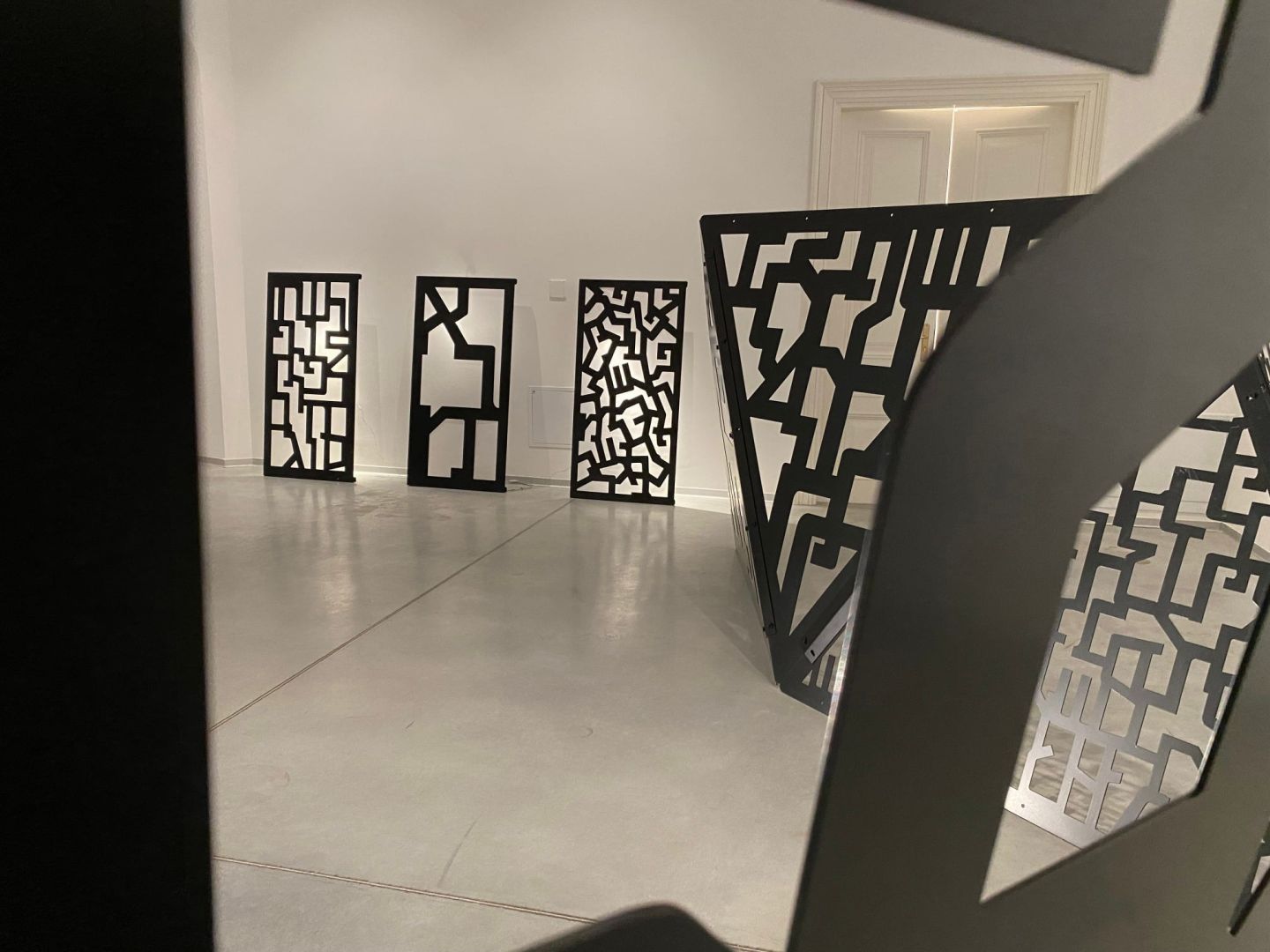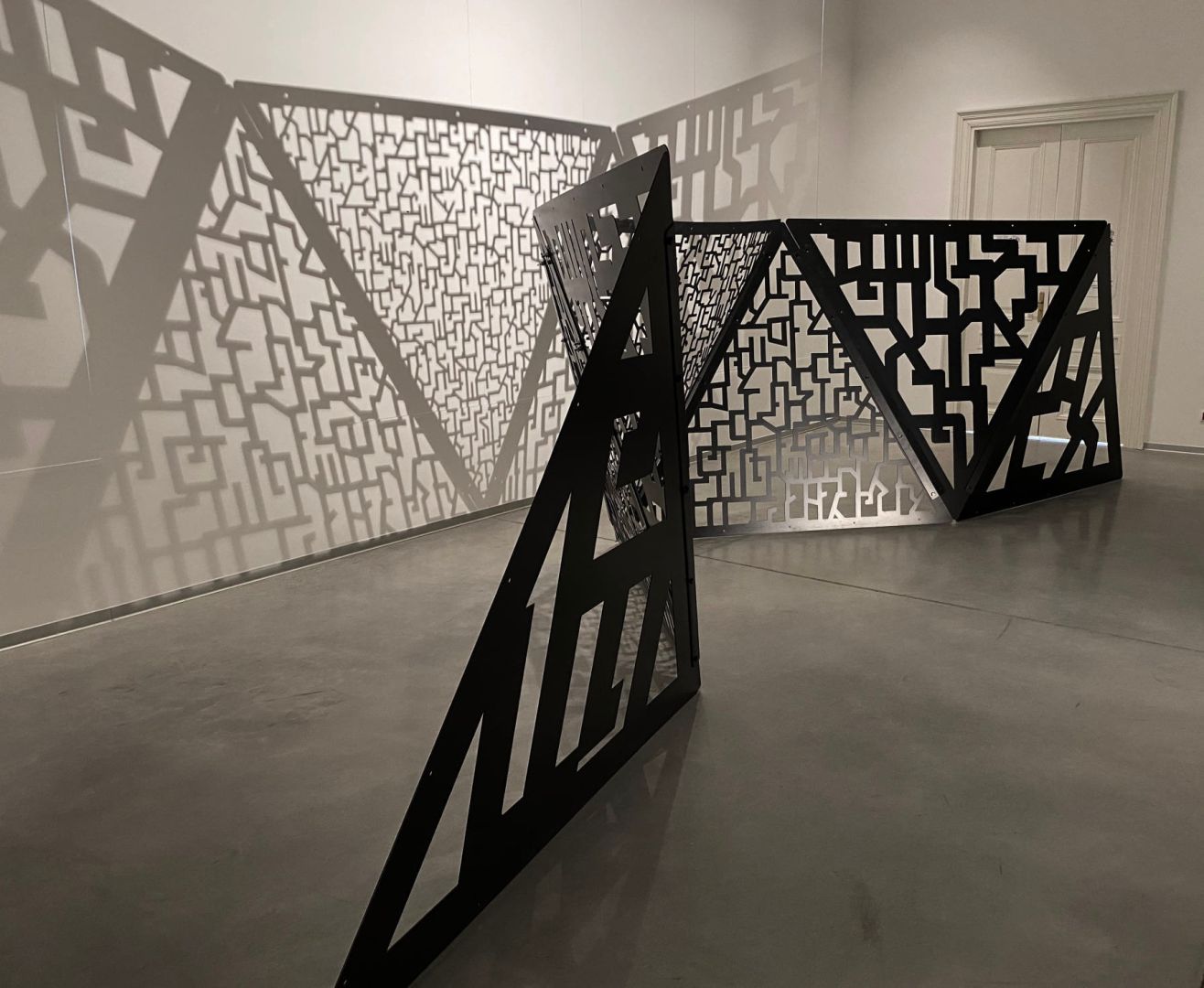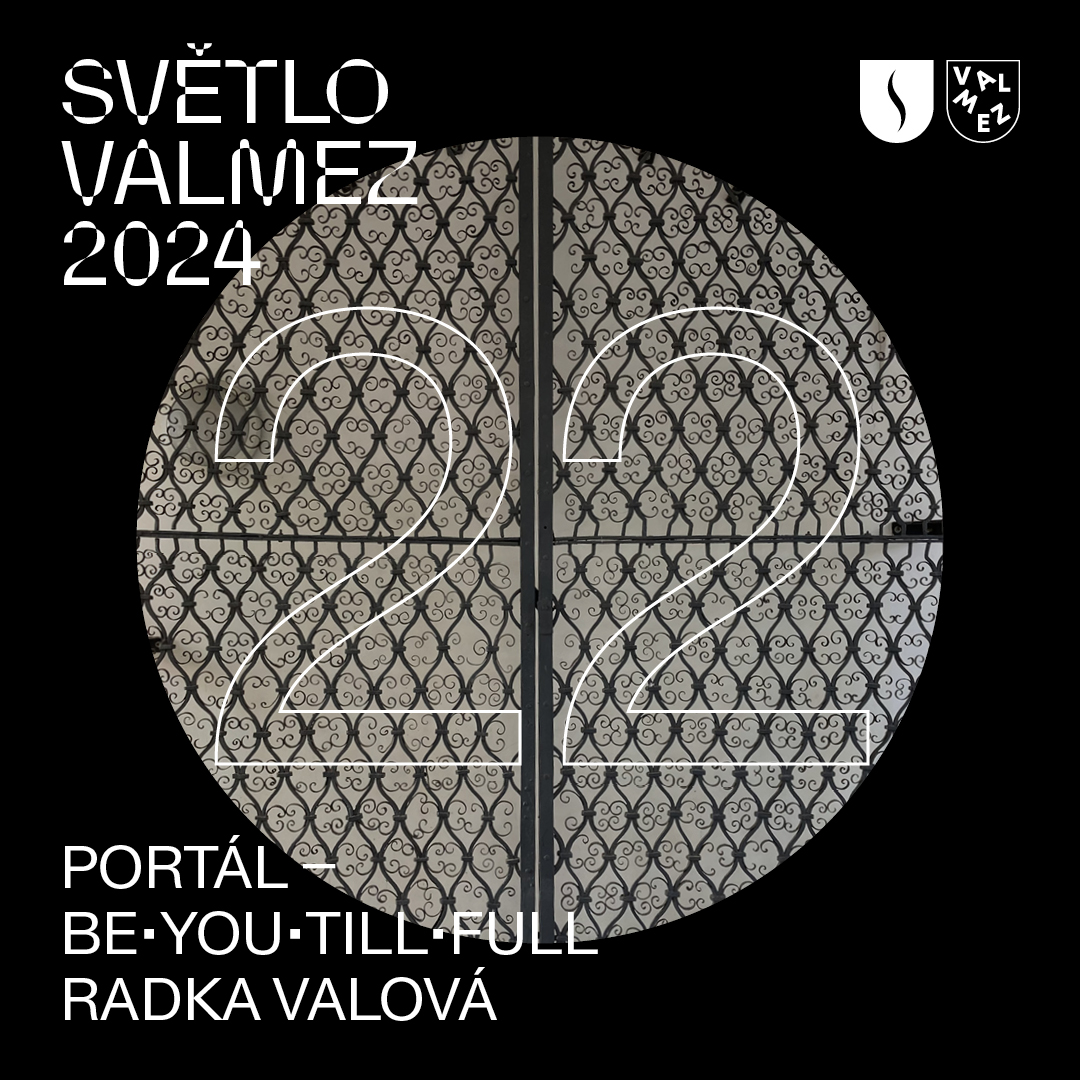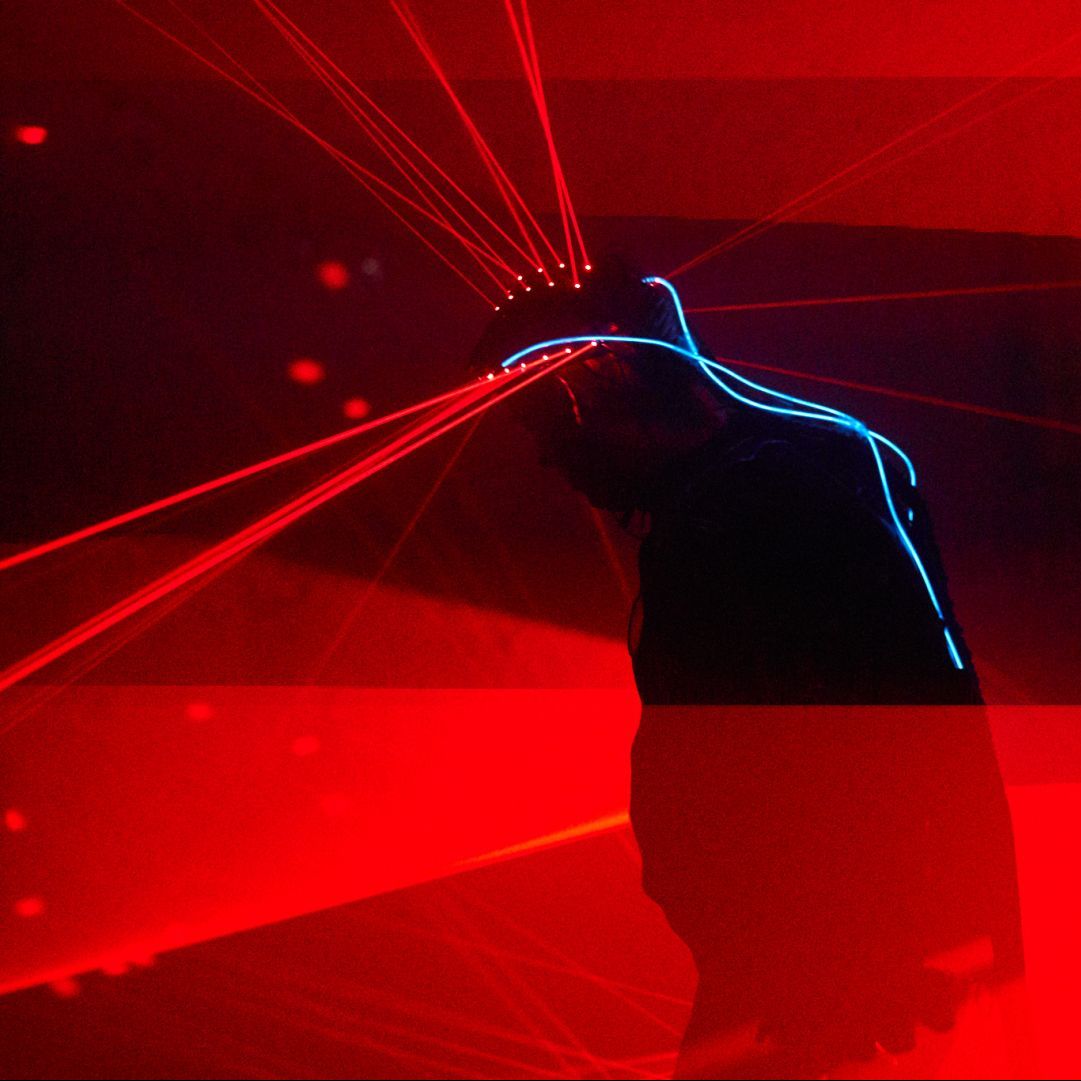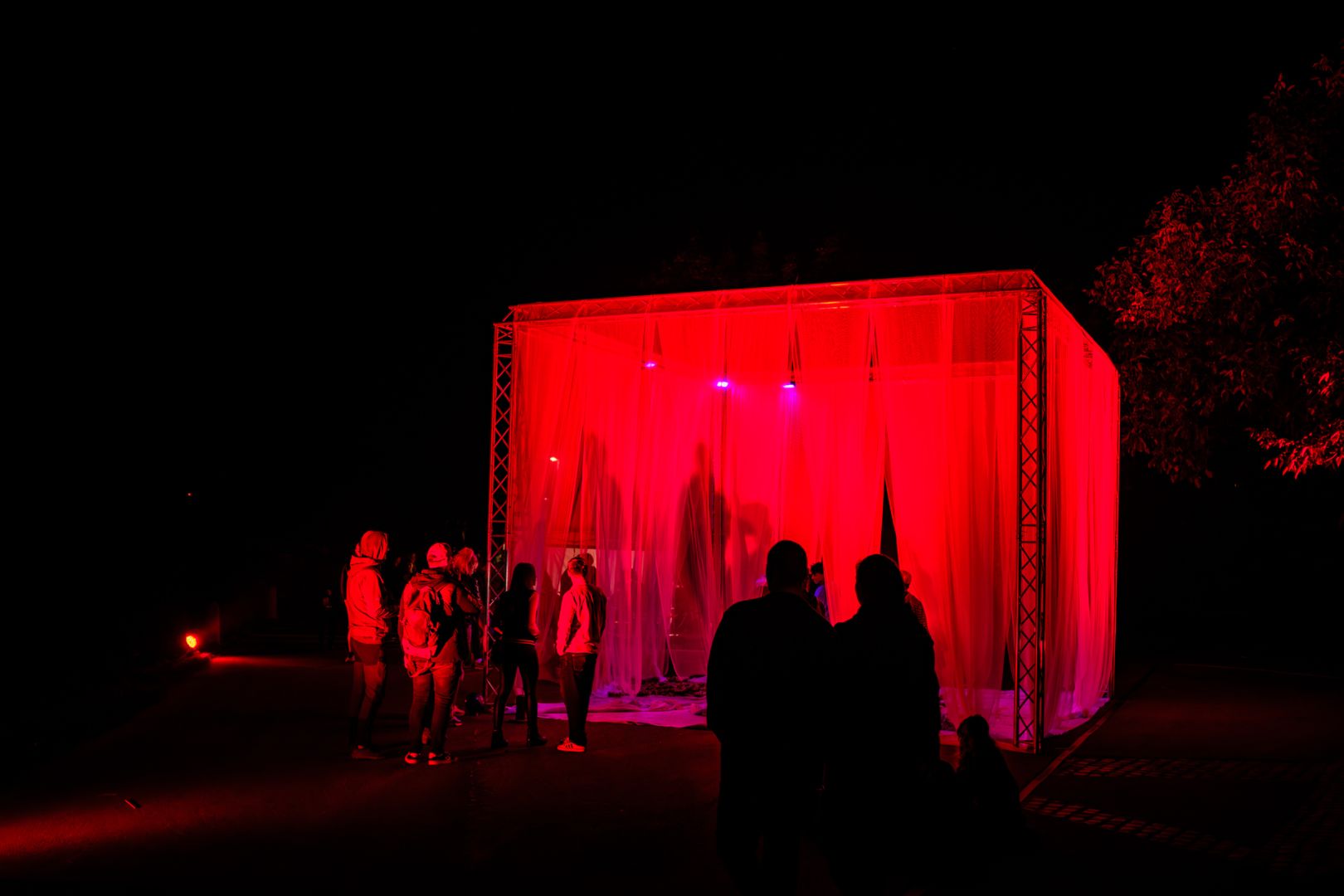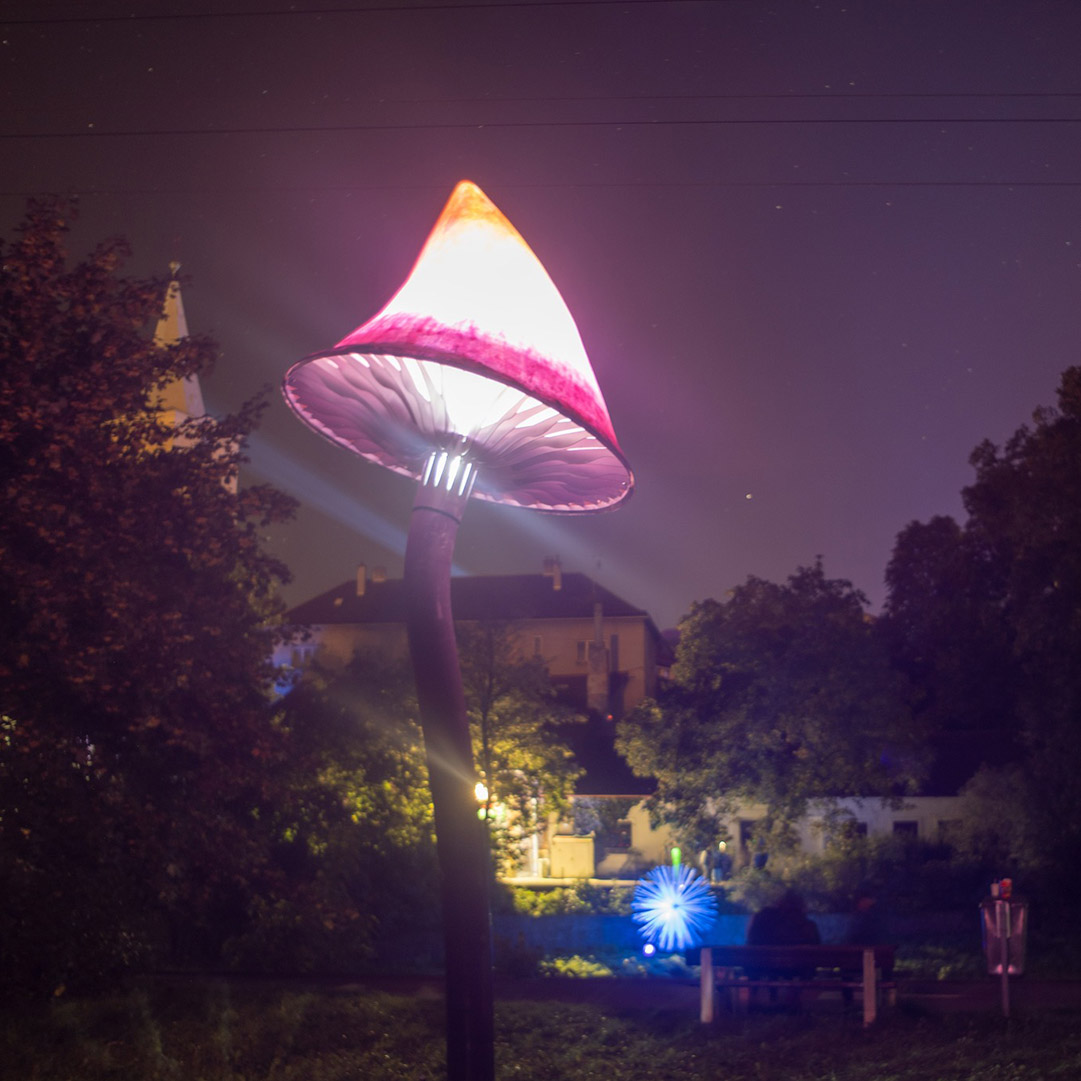Klaudia Kiercz –Długołęcka (PL) – Divinum Lumen
Instalace č.10
CZ
Světlo jako metafora pravdy, dobra a božství je přítomno v mnoha náboženstvích a kulturách. Esence Boha, nepolapitelná a nepopsatelná ve své fyzičnosti, je přirovnávána ke světlu. V hinduismu je světlo dobro, stoupenci perského zoroastrismu věří, že světlo je Bůh. V judaismu je světlo božským atributem.
(Je dáno Bohem a má tvořivou moc – s jeho pomocí byla vytvořena posvátná písmena hebrejské abecedy – nositelé duchovní síly, jeví se jako ner tamid (věčné světlo) umístěné v chrámu v blízkosti Aron-ha-Kodesh a Svatá kniha. Jeho přítomnost dělá prostor a udržuje jeho posvátný charakter. To je také příběh o rituálním připomenutí, jehož je Festival světel Chanuka. Zázrak, který se stal v jeruzalémském chrámu poté, co byl znesvěcen Seleukovci, spočíval v tom, že olej, který v něm zůstal, hořel dalších osm dní, dokud nebyl chrám znovu vysvěcen. Pro Židy je tento hořící olej symbolem náboženské a kulturní kontinuity. Lze tedy usoudit, že přítomnost světla dělá z fyzického nebo duševního prostoru posvátnou zónu. Pokud tedy z celku vyjmeme část posvátna, zůstane nám profánní prostor. Tedy vše, co není božské. Není-li tedy božské, pak je zlé, hříšné, zkažené, chtělo by se hned říci: lidské. Avšak přítomnost Boha, stejně jako přítomnost světla, je pro věřící mimo naši lidskou kontrolu.
- Zóna křížové kosti je zóna světla
- Tekutá profánní zóna je oblast osvětlená světlem
- Ritualita, vědomé lidské jednání je clona, která prostřednictvím písmene modifikuje a interpretuje nesmírnost a neurčitost božské formy – znamení od Boha, které je člověk schopen
ENG
Light as a metaphor for truth, goodness and divinity is present in many religions and cultures. The essence of God, elusive and indescribable in its physicality, is compared to light. In Hinduism, light is good; followers of Persian Zoroastrianism believe that light is God. In Judaism, light is a divine attribute.
(It is given by God and has creative power – with its help the sacred letters of the Hebrew alphabet were created – bearers of spiritual power, appearing as ner tamid (eternal light) placed in the Temple near the Aron-ha-Kodesh and the Holy Book. Its presence makes space and maintains its sacred character. This is also the story of the ritual commemoration of which the Festival of Lights is Hanukkah. The miracle that happened in the Jerusalem Temple after it was desecrated by the Seleucids was that the oil that remained in it burned for the next eight days until the Temple was rededicated. For Jews, this burning oil is a symbol of religious and cultural continuity. Thus, it can be concluded that the presence of light makes a physical or spiritual space a sacred zone. Thus, if we remove part of the sacred from the whole, we are left with a profane space. That is, everything that is not divine. If it is not divine, then it is evil, sinful, corrupt, one would like to say at once: human. But the presence of God, like the presence of light, is beyond our human control for believers.
- The zone of the sacrum is the zone of light.
- The liquid profane zone is the area illuminated by light
- Rituality, conscious human action, is the screen that modifies and interprets the immensity and indeterminacy through the letter
Category:
Date:
09/05/2023


